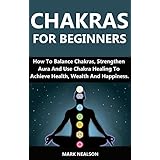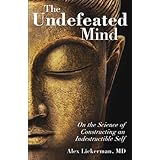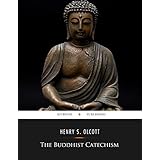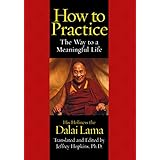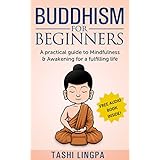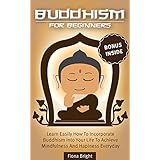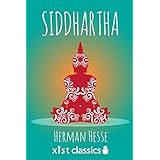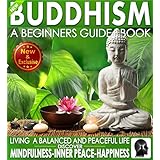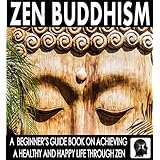APPENDIX
The following text of the fourteen items of belief which have been accepted as fundamental principles in both the Southern and Northern sections of Buddhism, by authoritative committees to whom they were submitted by me personally, have so much historical importance that they are added to the present edition of THE BUDDHIST CATECHISM as an Appendix. It has very recently been reported to me by H. E. Prince Ouchtomsky, the learned Russian Orientalist, that having had the document translated to them, the Chief Lamas of the great Mongolian Buddhist monasteries declared to him that they accept every one of the propositions as drafted, with the one exception that the date of the Buddha is by them believed to have been some thousands of years earlier than the one given by me. This surprising fact had not hitherto come to my knowledge. Can it be that the Mongolian Sangha confuse the real epoch of Sākya Muni with that of his alleged next predecessor? Be this as it may, it is a most encouraging fact that the whole Buddhistic world may now be said to have united to the extent at least of these Fourteen Propositions.
H. S. O.
FUNDAMENTAL BUDDHISTIC BELIEFS
I Buddhists are taught to show the same tolerance, forbearance, and brotherly love to all men, without distinction; and an unswerving kindness towards the members of the animal kingdom.
II The universe was evolved, not created; and its functions according to law, not according to the caprice of any God.
III The truths upon which Buddhism is founded are natural. They have, we believe, been taught in successive kalpas, or world-periods, by certain illuminated beings called BUDDHAS, the name BUDDHA meaning "Enlightened".
IV The fourth Teacher in the present kalpa was Sākya Muni, or Gautama Buddha, who was born in a Royal family in India about 2,500 years ago. He is an historical personage and his name was Siddhārtha Gautama.
V Sākya Muni taught that ignorance produces desire, unsatisfied desire is the cause of rebirth, and rebirth, the cause of sorrow. To get rid of sorrow, therefore, it is necessary to escape rebirth; to escape rebirth, it is necessary to extinguish desire; and to extinguish desire, it is necessary to destroy ignorance.
VI Ignorance fosters the belief that rebirth is a necessary thing. When ignorance is destroyed the worthlessness of every such rebirth, considered as an end in itself, is perceived, as well as the paramount need of adopting a course of life by which the necessity for such repeated rebirths can be abolished. Ignorance also begets the illusive and illogical idea that there is only one existence for man, and the other illusion that this one life is followed by states of unchangeable pleasure or torment.
VII The dispersion of all this ignorance can be attained by the persevering practice of an all-embracing altruism in conduct, development of intelligence, wisdom in thought, and destruction of desire for the lower personal pleasures.
VIII The desire to live being the cause of rebirth, when that is extinguished rebirths cease and the perfected individual attains by meditation that highest state of peace called Nirvāna.
IX Sākya Muni taught that ignorance can be dispelled and sorrow removed by the knowledge of the four Noble Truths, viz.:
1. The miseries of existence;
2. The cause productive of misery, which is the desire ever renewed of satisfying oneself without being able ever to secure that end;
3. The destruction of that desire, or the estranging of oneself from it;
4. The means of obtaining this destruction of desire. The means which he pointed out is called the Noble Eightfold Path, viz.: Right Belief; Right Thought; Right Speech; Right Action; Right Means of Livelihood; Right Exertion; Right Remembrance; Right Meditation.
X Right Meditation leads to spiritual enlightenment, or the development of that Buddha-like faculty which is latent in every man.
XI The essence of Buddhism, as summed up by the Tathāgathā (Buddha) himself, as:
To cease from all sin,
To get virtue,
To purify the heart.
XII The universe is subject to a natural causation known as "Karma". The merits and demerits of a being in past existences determine his condition in the present one. Each man, therefore, has prepared the causes of the effects which he now experiences.
XIII The obstacles to the attainment of good karma may be removed by the observance of the following precepts, which are embraced in the moral code of Buddhism, viz.: (1) Kill not; (2) Steal not; (3) Indulge in no forbidden sexual pleasure; (4) Lie not; (5) Take no intoxication or stupefying drug or liquor. Five other precepts which need not be here enumerated should be observed by those who would attain, more quickly than the average layman, the release from misery and rebirth.
XIV Buddhism discourages superstitious credulity. Gautama Buddha taught it to be the duty of a parent to have his child educated in science and literature. He also taught that no one should believe what is spoken by any sage, written in any book, or affirmed by tradition, unless it accord with reason.
Drafted as a common platform upon which all Buddhists can agree.
H. S. OLCOTT, P.T.S.
Respectfully submitted for the approval of the High Priests of the nations which we severally represent, in the Buddhist Conference held at Adyar, Madras, on the 8th, 9th, 10th, 11th, and 12th of January, 1891 (A.B. 2434).
Japan . . . . . ( Kozen Gunaratana
( Chiezo Tokuzawa
Burmah . . . . . U. Hmoay Tha Aung
Ceylon . . . . . Dhammapala Hevavitarana.
The Maghs of
Chittagong . . . Krshna Chandra Chowdry, by
his appointed Proxy, Maung
Tha Dwe.
BURMAH
Approved on behalf of the Buddhists of Burmah, this 3rd day of February, 1891 (A. B. 2434):
Tha-tha-na-baing Saydawgyi; Aung Myi Shwebōn Sayadaw; Me-ga-waddy Sayadaw; Hmat-Khaya Sayadaw; Hti-lin Sayadaw; Myadaung Sayadaw; Hla-Htwe Sayadaw; and sixteen others.
CEYLON
Approved on behalf of the Buddhists of Ceylon this 25th day of February, 1891 (A.B. 2434); Mahannwara upawsatha puspārāma vihārādhipati Hippola Dhamma Rakkhita Sobhitābhidhāna Mahā Nāyaka Sthavirayan wahanse wamha.
(Hippola Dhamma Rakkhita Sabhitābhidhana, High Priest of the Malwatta Vihare at Kandy).
(Sd.) HIPPOLA.
Mahanuwara Asgiri vihārādhipati Yatawattē Chandajottyābhidhana Mahā Nāyaka Sthavirayan wahanse wamha—(Yatawattē Chandajottyābhidhana, High Priest of Asgiri Tihare at Kandy).
(Sd.) YATAWATTE
Hikkaduwe Srī Sumangala Sripādasthāne saha Kolamba palate pradhāna Nāyaka Sthavirayo (Hikkaduwe Srī Sumangala, High Priest of Adam's Peak and the District of Colombo).
(Sd.) H. SUMANGALA
Maligawe Prāchina Pustakālāyadhyakshaka Surīyagoda Sonuttara Sthavirayo (Suriyagoda Sonuttara, Librarian of the Oriental Library at the Temple of the Tooth Relic at Kandy).
(Sd.) S. SONUTTARA
Sugata Sāsanadhaja Vinayā chāriya Dhammalankārābhidhāna Nāyaka Sthavira.
(Sd.) W. DHAMMALANKARA
Pawara neruttika chariya Mahā Vibhavi Subhuti of Waskaduwa.
(Sd.) W. SUBHUTI
JAPAN
Accepted as included within the body of Northern Buddhism.
Shaku Genyu (Shingon Shu)
Fukuda Nichiyo (Nichiren " )
Sanada Seyko (Zen " )
Ito Quan Shyu ( " " )
Takehana Hakuyo (Jodo " )
Kono Rioshin (Ji-Shu " )
Kiro Ki-ko (Jodo Seizan " )
Harutani Shinsho (Tendai " )
Manabe Shun-myo (Shingon " )
CHITTAGONG
Accepted for the Buddhists of Chittagong.
Nagawa Parvata Vihāarādhipati
Guna Megu Wini-Lankara,
Harbing, Chittagong, Bengal.
BIBLIOGRAPHY
The Buddhist Catechism has been compiled from personal studies in Ceylon, and in part from the following works:
Vinaya Texts . . . . . . . . . . . . . . Davids and Oldenberg.
Buddhist Literature in China . . . . . . Beal.
Catena of Buddhist Scriptures . . . . . Do.
Buddhaghosa's Parables . . . . . . . . . Rogers.
Buddhist Birth Stories . . . . . . . . . Fausboll and Davids.
Legend of Gautama . . . . . . . . . . . Bigandet.
Chinese Buddhism . . . . . . . . . . . . Edkins.
Kalpa Sutra and Nava Patva . . . . . . . Stevenson.
Buddha and Early Buddhism . . . . . . . Lillie.
Sutta Nipāta . . . . . . . . . . . . . . Sir Coomara Swami.
Nāgananda . . . . . . . . . . . . . . . Broyd.
Kusa Jataka . . . . . . . . . . . . . . Steele.
Buddhism . . . . . . . . . . . . . . . . Rhys-Davids.
Dhammapada . . . . . . . . . . . . . . . Fausboll and Max Müller.
Romantic History of Buddha . . . . . . . Beal.
Udānavarga . . . . . . . . . . . . . . . Rockhill.
Twelve Japanese Buddhist Sects . . . . . B. Nanjio.
The Gospel of Buddha . . . . . . . . . . Paul Carus.
The Dharma . . . . . . . . . . . . . . . Do.
Ancient India . . . . . . . . . . . . . R. C. Dutt.
The "Sacred Books of the East" Series . Max Müller's Edition.
Encyclopædia Britannica
Printed by
Annie Besant
Vasanta Press
Adyar Madras
BUDDHISM AND SCIENCE
325. Q. Has Buddhism any right to be considered a scientific religion, or may it be classified as a "revealed" one?
A. Most emphatically it is not a revealed religion. The Buddha did not so preach, nor is it so understood. On the contrary, he gave it out as the statement of eternal truths, which his predecessors had taught like himself.
326. Q. Repeat again the name of the Sutta, in which the Buddha tells us not to believe in an alleged revelation without testing it by one's reason and experience?
A. The Kālāma Sutta, of the Anguthara Nikāya.
327. Q. Do Buddhists accept the theory that everything has been formed out of nothing by a Creator?
A. The Buddha taught that two things are causeless, viz., Ākāsha, and Nirvāna. Everything has come ont of Ākāsha, in obedience to a law of motion inherent in it, and, after a certain existence, passes away. Nothing ever came out of nothing. We do not believe in miracles; hence we deny creation, and cannot conceive of a creation of something out of nothing. Nothing organic is eternal. Everything is in a state of constant flux, and undergoing change and reformation, keeping up the continuity according to the law of evolution.
328. Q. Is Buddhism opposed to education, and to the study of science?
A. Quite the contrary: in the Sigālowāda Sutta in a discourse preached by the Buddha, He specified as one of the duties of a teacher that he should give his pupils "instruction in science and lore". The Buddha's higher teachings are for the enlightened, the wise, and the thoughtful.
329. Q. Can you show any further endorsement of Buddhism by science?
A. The Buddha's doctrine teaches that there were many progenitors of the human race; also that there is a principle of differentiation among men; certain individuals have a greater capacity for the rapid attainment of Wisdom and arrival at Nirvāna than others.
330. Q. Any other?
A. Buddhism supports the teaching of the indestructibility of force.
331. Q. Should Buddhism be called a chart of science or a code of morals?
A. Properly speaking, a pure moral philosophy, a system of ethics and transcendental metaphysics. It is so eminently practical that the Buddha kept silent when Malunka asked about the origin of things.
332. Q. Why did he do that?
A. Because he thought that our chief aim should be to see things as they exist around us and try to make them better, not to waste time in intellectual speculations.
333. Q. What do Buddhists say is the reason for the occasional birth of very good and wise children of bad parents, and that of very bad ones of good parents?
A. It is because of the respective Karmas of children and parents; each may have deserved that such unusual relationships should be formed in the present birth.
334. Q. Is anything said about the body of the Buddha giving out a bright light?
A. Yes, there was a divine radiance sent forth from within by the power of his holiness.
335. Q. What is it called in Pālī?
A. Buddharansi, the Buddha rays.
336. Q. How many colours could be seen in it?
A. Six, linked in pairs.
337. Q. Their names?
A. Nīla, Pita, Lohita, Avadata, Mangastā, Prabhasvra.
338. Q. Did other persons emit such shining light?
A. Yes, all Arhats did and, in fact, the light shines stronger and brighter in proportion to the spiritual development of the person.
339. Q. Where do we see these colours represented?
A. In all vihāras where there are painted images of the Buddha. They are also seen in the stripes of the Buddhist Flag, first made in Ceylon but now widely adopted throughout Buddhist countries.
340. Q. In which discourse does the Buddha himself speak of this shining about him?
A. In the Mahā-Parinibbana Suttā, Ānanda his favourite disciple, noticing the great splendour which came from his Master's body, the Buddha said that on two occasions this extraordinary shining occurs, (a) just after a Tathāgatā gains the supreme insight, and (b) on the night when he passes finally away.
341. Q. Where do we read of this great brightness being emitted from the body of another Buddha?
A. In the story of Sumedha and Dipānkāra Buddha, found in the Nidānakathā of the Jātaka book, or story of the reincarnations of the Bodhisattva Siddhārtha Gautama.
342. Q. How is it described?
A. As a halo of a fathom's depth.
343. Q. What do the Hindus call it?
A. Tejas; its extended radiance they call Prākāsha.
344. Q. What do Europeans call it now?
A. The human aura.
345. Q. What great scientist has proved the existence of this aura by carefully conducted experiments?
A. The Baron Von Reichenbach. His experiments are fully described in his Researches, published in 1844-5. Dr. Baraduc, of Paris, has, quite recently, photographed this light.
346. Q. Is this bright aura a miracle or a natural phenomenon?
A. Natural. It has been proved that not only all human beings but animals, trees, plants and even stones have it.
347. Q. What peculiarity has it in the case of a Buddha or an Arhat?
A. It is immensely brighter and more extended than in cases of other beings and objects. It is the evidence of their superior development in the power of Iddhī. The light has been seen coming from dāgobas in Ceylon where relics of the Buddha are said to be enshrined.
348. Q. Do people of other religions besides Buddhism and Hindūism also believe in this light?
A. Yes, in all pictures of Christian artists this light is represented as shining about the bodies of their holy personages. The same belief is found to have existed in other religions.
349. Q. What historical incident supports the modern theory of hypnotic suggestion?
A. That of Chullapanthaka, as told in the Pālī Commentary on the Dhammapada, etc.
350. Q. Give me the facts.
A. He was a bhikkhu who became an Arhat. On that very day the Buddha sent a messenger to call him. When the man reached the Vihāra, he saw three hundred bhikkhus in one group, each exactly like the others in every respect. On his asking which was Chullapanthaka, every one of the three hundred figures replied: "I am Chullapanthaka."
351. Q. What did the messenger do?
A. In his confusion he returned and reported to the Buddha.
352. Q. What did the Buddha then tell him?
A. To return to the vihāra and, if the same thing happened, to catch by the arm the first figure who said he was Chullapanthaka and lead him to him. The Buddha knew that the new Arhat would make this display of his acquired power to impress illusionary pictures of himself upon the messenger.
353. Q. What is this power of illusion called in Pālī?
A. Manomaya Iddhī.
354. Q. Were the illusionary copies of the Arhat's person material? Were they composed of substance and could they have been felt and handled by the messenger?
A. No; they were pictures impressed by his thought and trained will-power upon the messenger's mind.
355. Q. To what would you compare them?
A. To a man's reflection in a mirror, being exactly like him yet without solidity.
356. Q. To make such an illusion on the messenger's mind, what was necessary?
A. That Chullapanthaka should clearly conceive in his own mind his exact appearance, and then impress that, with as many duplicates or repetitions as he chose, upon the sensitive brain of the messenger.
357. Q. What is this process now called?
A. Hypnotic suggestion.
358. Q. Could any third party have also seen these illusionary figures?
A. That would depend on the will of the Arhat or hypnotiser.
359. Q. What do you mean?
A. Supposing that fifty or five hundred persons were there, instead of one, the Arhat could will that the illusion should be seen by all alike; or, if he chose, he could will that the messenger should be the only one to see them.
360. Q. Is this branch of science well known in our day?
A. Very well known; it is familiar to all students of mesmerism and hypnotism.
361. Q. In what does our modern scientific belief support the theory of Karma, as taught in Buddhism?
A. Modern scientists teach that every generation of men is heir to the consequences of the virtues and the vices of the preceding generation, not in the mass, as such, but in every individual case. Every one of us, according to Buddhism, gets a birth which represents the causes generated by him in an antecedent birth. This is the idea of Karma.
362. Q. What say the Vāsettha Sutta about the causation in Nature?
A. It says: "The world exists by cause; all things exist by cause, all beings are bound by cause."
363. Q. Does Buddhism teach the unchangeableness of the visible universe; our earth, the sun, the moon, the stars, the mineral, vegetable, animal and human kingdoms?
A. No. It teaches that all are constantly changing, and all must disappear in course of time.
364. Q. Never to reappear?
A. Not so: the principle of evolution, guided by Karma, individual and collective, will evolve another universe with its contents, as our universe was evolved out of the Ākāsha.
365. Q. Does Buddhism admit that man has in his nature any latent powers for the production of phenomena commonly called "miracles"?
A. Yes; but they are natural, not supernatural. They may be developed by a certain system which is laid down in our sacred books, the Visuddhi Mārga for instance.
366. Q. What is this branch of science called?
A. The Pālī name is Iddhi-vidhanānā.
367. Q. How many kinds are there?
A. Two: Bāhira, i.e., one in which the phenomena-working power may be temporarily obtained by ascetic practices and also by resort to drugs, the recitation of mantras (charms), or other extraneous aids; and Sasaniks, that in which the power in question is acquired by interior self-development, and covers all and more than the phenomena of Laukika Iddhī.
368. Q. What class of men enjoy these powers?
A. They gradually develop in one which pursues a certain course of ascetic practice called Dhyāna.
369. Q. Can this Iddhi power be lost?[1]
A. The Bāhira can be lost, but the Sasanika never, when once acquired. Lokottara knowledge once obtained is never lost, and it is by this knowledge only that the absolute condition of Nirvāna is known by the Arhat. And this knowledge can be got by following the noble life of the Eightfold Path.
370. Q. Had Buddha the Lokottara Iddhī?
A. Yes, in perfection.
371. Q. And his disciples also had it?
A. Yes, some but not all equally; the capacity for acquiring these occult powers varies with the individual.
372. Q. Give examples?
A. Of all the disciples of the Buddha, Mogallāna was possessed of the most extraordinary powers for making phenomena, while Ānanda could develop none during the twenty-five years in which he was the personal and intimate disciple of the Buddha himself. Later he did, as the Buddha had foretold he would.
373. Q. Does a man acquire these powers suddenly or gradually?
A. Normally, they gradually develop themselves as the disciple progressively gains control over his lower nature in a series of births.[2]
374. Q. Does Buddhism pretend that the miracle of raising those who are dead is possible?
A. No. The Buddha teaches the contrary, in that beautiful story of Kisā Gotami and the mustard-seed. But when a person only seems to be dead but is not actually so, resuscitation is possible.
375. Q. Give me an idea of these successive stages of the Lokottara development in Iddhī?
A. There are six degrees attainable by Arhats; what is higher than them is to be reached only by a Buddha.
376. Q. Describe the six stages or degrees?
A. We may divide them into two groups, of three each. The first to include (1) Progressive retrospection, viz., a gradually acquired power to look backward in time towards the origin of things; (2) Progressive foresight, or power of prophecy; (3) Gradual extinction of desires and attachments to material things.
377. Q. What would the second group include?
A. The same faculties, but inimitably developed. Thus, the full Arhat possesses perfect retrospection, perfect foresight, and has absolutely extinguished the last trace of desire and selfish attractions.
378. Q. What are the four means for obtaining Iddhī?
A. The will, its exertion, mental development, and discrimination between right and wrong.
379. Q. Our Scriptures relate hundreds of instances of phenomena produced by Arhats: what did you say was the name of this faculty or power?
A. Iddhī vidha. One possessing this can, by manipulating the forces of Nature, produce any wonderful phenomenon, i.e., make any scientific experiment he chooses.
380. Q. Did the Buddha encourage displays of phenomena?
A. No; he expressly discouraged them as tending to create confusion in the minds of those who were not acquainted with the principles involved. They also tempt their possessors to show them merely to gratify idle curiosity and their own vanity. Moreover, similar phenomena can be shown by magicians and sorcerers learned in the Laukika, or the baser form of Iddhī science. All false pretensions to supernatural attainment by monks are among the unpardonable sins (Tevijja Sutta).
381. Q. You spoke of a "deva" having appeared to the Prince Siddhārtha under a variety of forms; what do Buddhists believe respecting races of elemental invisible beings having relations with mankind?
A. They believe that there are such beings who inhabit worlds or spheres of their own. The Buddhist doctrine is that, by interior self-development and conquest over his baser nature, the Arhat becomes superior to even the most formidable of the devas, and may subject and control the lower orders.
382. Q. How many kinds of devas are there?
A. Three: Kāmāvācharā (those who are still under the domination of the passions); Rūpāvācharā (a higher class, which still retain an individual form): Arāpāvācharā (the highest in degree of purification, who are devoid of material forms).
383. Q. Should we fear any of them?
A. He who is pure and compassionate in heart and of a courageous mind need fear nothing: no man, god, brahmarakkhas, demon or deva, can injure him, but some have power to torment the impure, as well as those who invite their approach.
[1] Sumangala Sthavīra explains to me that those transcendent powers are permanently possessed only by one who has subdued all the passions (Klesa), in other words, an Arhat. The powers may be developed by a bad man and used for doing evil things, but their activity is but brief, the rebellious passions again dominate the sorcerer, and he becomes at last their victim.
[2] When the powers suddenly show themselves, the inference is that the individual had developed himself in the next anterior birth. We do not believe in eccentric breaks in natural law.
THE RISE AND SPREAD OF BUDDHISM
279. Q. As regards the number its followers, how does Buddhism at this date compare with the other chief religions?
A. The followers of the Buddha Dharma outnumber those of every other religion.
280. Q. What is the estimated number?
A. About five hundred millions (5,000 lakhs or 500 crores): this is five-thirteenths, or not quite half, of the estimated population of the globe.
281. Q. Have many great battles been fought and many countries conquered; has much human blood been spilt to spread the Buddha Dharma?
A. History does not record one of those cruelties and crimes as having been committed to propagate our religion. So far as we know, it has not caused the spilling of a drop of blood. (See footnote ante—Professor Kolb's testimony.)
282. Q. What, then, is the secret of its wonderful spread?
A. It can be nothing else than its intrinsic excellence: its self-evident basis of truth, its sublime moral teaching, and its sufficiency for all human needs.
283. Q. How has it been propagated?
A. The Buddha, during the forty-five years of his life as a Teacher, travelled widely in India and preached the Dharma. He sent his wisest and best disciples to do the same throughout India.
284. Q. When did He send for his pioneer missionaries?
A. On the full-moon day of the month Wap (October).
285. Q. What did he tell them?
A. He called them together and said: "Go forth, Bhikkhus, go and preach the law to the world. Work for the good of others as well as for your own.... Bear ye the glad tidings to every man. Let no two of you take the same way."
286. Q. How long before the Christian era did this happen?
A. About six centuries.
287. Q. What help did Kings give?
A. Besides the lower classes, great Kings, Rājās and Mahārājās were converted and gave their influence to spread the religion.
288. Q. What about pilgrims?
A. Learned pilgrims came in different centuries to India and carried back with them books and teachings to their native lands. So, gradually, whole nations forsook their own faiths and became Buddhists.
289. Q. To whom, more than to any other person, is the world indebted for the permanent establishment of Buddha's religion?
A. To the Emperor Ashoka, surnamed the Great, sometimes Piyadāsi, sometimes Dharmāshoka. He was the son of Bindusāra, King of Magadha, arid grandson of Chandragupta, who drove the Greeks out of India.
290. Q. When did he reign?
A. In the third century B.C., about two centuries after the Buddha's time. Historians disagree as to his exact date, but not very greatly.
291. Q. What made him great?
A. He was the most powerful monarch in Indian history, as warrior and as statesman; but his noblest characteristics were his love of truth and justice, tolerance of religious differences, equity of government, kindness to the sick, to the poor, and to animals. His name is revered from Siberia to Ceylon.
292. Q. Was he born a Buddhist?
A. No, he was converted in the tenth year after his anointment as King, by Nigrodha Samanera, an Arhat.
293. Q. What did he do for Buddhism?
A. He drove out bad Bhikkhus, encouraged good ones, built monasteries and dāgobas everywhere, established gardens, opened hospitals for men and animals, convened a council at Patna to revise and re-establish the Dharma, promoted female religious education, and sent embassies to five Greek kings, his allies, and to all the sovereigns of India, to preach the doctrines of the Buddha. It was he who built the monuments at Kapilavastu, Buddha Gāya, Isipatana and Kusinārā, our four chief places of pilgrimage, besides thousands more.
294. Q. What absolute proofs exist as to his noble character?
A. Within recent years there have been discovered, in all parts of India, fourteen Edicts of his, inscribed on living rocks, and eight on pillars erected by his orders. They fully prove him to have been one of the wisest and most high-minded sovereigns who ever lived.
29.5. Q. What character do these inscriptions give to Buddhism?
A. They show it to be a religion of noble tolerance, of universal brotherhood, of righteousness and justice. It has no taint of selfishness, sectarianism or intolerance. They have done more than anything else to win for it the respect in which it is now held by the great pandits of western countries.
296. Q. What most precious gift did Dharmāshoka make to Buddhism?
A. He gave his beloved son, Mahinda, and daughter, Sanghamitta, to the Order, and sent them to Ceylon to introduce the religion.
297. Q. Is this fact recorded in the history of Ceylon?
A. Yes, it is all recorded in the Mahāvansa, by the keepers of the royal records, who were then living and saw the missionaries.
298. Q. Is there some proof of Sanghamitta's mission still visible?
A. Yes; she brought with her to Ceylon a branch of the very Bodhi tree under which the Buddha sat when he became Enlightened, and it is still growing.
299. Q. Where?
A. At Annrādhapura. The history of it has been officially preserved to the present time. Planted in 306 B.C., it is the oldest historical tree in the world.
300. Q. Who was the reigning sovereign at that time?
A. Dēvanampiyatissa. His consort, Queen Anula, had invited Sanghamitta to come and establish the Bhikkhuni branch of the Order.
301. Q. Who came with Sanghamitta?
A. Many other Bhikkhunis. She, in due time, admitted the Queen and many of her ladies, together with five hundred virgins, into the Order.
302. Q. Can we trace the effects of the foreign work of the Emperor Ashoka's missionaries?
A. His son and daughter introduced Buddhism into Ceylon: his monks gave it to the whole of Northern India, to fourteen Indian nations outside its boundaries, and to five Greek kings, his allies, with whom he made treaties to admit his religious preachers.
303. Q. Can you name them?
A. ANTIOCHUS of Syria, PTOLEMY of Egypt, ANTIGONUS of Macedon, MARGAS of Cyrene, and ALEXANDER of Epiros.
04. Q. Where do we learn this?
A. From the Edicts themselves of Ashoka the Great, inscribed by him on rocks and stone pillars, which are still standing and can be seen by everybody who chooses to visit the places.
305. Q. Through what western religious brotherhoods did the Buddha Dharma mingle itself with western thought?
A. Through the sects of the Therapeuts of Egypt and the Essenes of Palestine.
306. Q. When were Buddhist books first introduced into China?
A. As early as the second or third century B.C. Five of Dharmāshoka's monks are said—in the Samanta Pasādika and the Sārattha Dīpanī—two Pālī books—to have been sent to the five divisions of China.
307. Q. Whence and when did it reach Korea?
A. From China, in the year A. D. 372.
308. Q. Whence and when did it reach Japan?
A. From Korea, in A. D. 552.
309. Q. Whence and when did it reach Cochin China, Formosa, Java, Mongolia, Yorkand, Balk, Bokhara, Afghanistan and other Central Asian countries?
A. Apparently in the fourth and fifth centuries A.D.
310. Q. From Ceylon, whither and when did it spread?
A. To Burma, in A.D. 450, and thence gradually into Arakan, Kamboya and Pegu. In the seventh century (A.D. 638) it spread to Siam, where it is now, as it has been always since then, the State religion.
311. Q. From Kashmir, where else did it spread besides to China?
A. To Nepāl and Tibet.
312. Q. Why is it that Buddhism, which was once the prevailing religion throughout India, is now almost extinct there?
A. Buddhism was at first pure and noble, the very teaching of the Tathagata; its Sangha were virtuous and observed the Precepts; it won all hearts and spread joy through many nations, as the morning light sends life through the flowers. But after some centuries, bad Bhikkhus got ordination (Upasampada) the Sangha became rich, lazy, and sensual, the Dharma was corrupted, and the Indian nation abandoned it.
313. Q. Did anything happen about the ninth or tenth century A.D. to hasten its downfall?
A. Yes.
314. Q. Anything besides the decay of spirituality, the corruption of the Sangha, and the reaction of the populace from a higher ideal of man to unintelligent idolatry?
A. Yes. It is said that the Mussalmāns invaded, overran and conquered large areas of India; everywhere doing their utmost to stamp out our religion.
315. Q. What cruel acts are they charged with doing?
A. They burnt, pulled down or otherwise destroyed our vihāras, slaughtered our Bhikkhus, and consumed with fire our religious books.
316. Q. Was our literature completely destroyed in India?
A. No. Many Bhikkhus fled across the borders into Tibet and other safe places of refuge, carrying their books with them.
317. Q. Have any traces of these books been recently discovered?
A. Yes. Rai Bhādur Sarat Chandra Dās, C.I.E., a noted Bengali pandit, saw hundreds of them in the vihāra libraries of Tibet, brought copies of some of the most important back with him, and is now employed by the Government of India in editing and publishing them.
318. Q. In which country have we reason to believe the sacred books of primitive Buddhism have been best preserved and least corrupted?
A. Ceylon. The Encyclopaedia Britannica says that in this island Buddhism has, for specified reasons, "retained almost its pristine purity to modern times".
319. Q. Has any revision of the text of the Pitakas been made in modern times?
A. Yes. A careful revision of the Vināya Pitaka was made in Ceylon in the year A.D. 1875, by a convention of the most learned Bhikkhus, under the presidency of H. Sumangala, Pradhāna Sthavīra.
320. Q. Has there been any friendly intercourse in the interest of Buddhism between the peoples of the Southern and those of the Northern Buddhist countries?
A. In the year A.D. 1891, a successful attempt was made to get the Pradhāna Nayakas of the two great divisions to agree to accept fourteen propositions as embodying fundamental Buddhistic beliefs recognised and taught by both divisions. These propositions, drafted by Colonel Olcott, were carefully translated into Burmese, Sinhalese and Japanese, discussed one by one, unanimously adopted and signed by the chief monks, and published in January 1892.
321. Q. With what good result?
A. As the result of the good understanding now existing, a number of Japanese bhikkhus and samaneras have been sent to Ceylon and India to study Pālī and Samskrt.
322. Q. Are there signs that the Buddha Dharma is growing in favour in non-Buddhistic countries?[1]
A. There are. Translations of our more valuable books are appearing, many articles in reviews, magazines and newspapers are being published, and excellent original treatises by distinguished writers are coming from the press. Moreover, Buddhist and non-Buddhist lecturers are publicly discoursing on Buddhism to large audiences in western countries. The Shin Shu sect of Japanese Buddhists have actually opened missions at Honolulu, San Francisco, Sacramento and other American places.
323. Q. What two leading ideas of ours are chiefly taking hold upon the western mind?
A. Those of Karma and Reincarnation. The rapidity of their acceptance is very surprising.
324. Q. What is believed to be the explanation of this?
A. Their appeals to the natural instinct of justice, and their evident reasonableness.
[1] See Appendix.
THE SANGHA
256. Q. How do Buddhist Bhikkhus differ from the priests of other religions?
A. In other religions the priests claim to be intercessors between men and God, to help to obtain pardon of sins; the Buddhist Bhikkhus do not acknowledge or expect anything from a divine power.
257. Q. But why then was it worth while to create this Order, or Brotherhood, or Society, apart from the whole body of the people, if they were not to do what other religious orders do?
A. The object in view was to cause the most virtuous, intelligent, unselfish and spiritually-minded persons to withdraw from the social surroundings where their sensual and other selfish desires were naturally strengthened, devote their lives to the acquisition of the highest wisdom, and fit themselves to teach and guide others out of the pleasant path leading towards misery, into the harder path that leads to true happiness and final liberation.
258. Q. Besides the Eight, what two additional observances are obligatory upon the Bhikkhus?
A. I observe the precept to abstain from dancing, singing and unbecoming shows.
I observe the precept to abstain from receiving gold or silver.
The whole Dasa, or Bhikkhu Sīla or Ten Precepts, are binding on all Bhikkhus and Samaneras, or novices, but optional with lay devotees.
The Atthanga Sīla are for those who aspire to higher stages beyond the heavenly regions,[1] aspirants after Nirvāna.
259. Q. Are there separate Rules and Precepts for the guidance and discipline of the Order?
A. Yes: there are 250, but all come under the following four heads:
Principal Disciplinary Rules {Pātimokkha Samvara Sīla).
Observances for the repression of the senses (Indriya Samvara Sīla).
Regulations for justly procuring and using food, diet, robes, etc., (Paccaya Sannissita Sīla).
Directions for leading an unblemished life (Ajivapari Suddha Sīla).
260. Q. Enumerate some crimes and offences that Bhikkhus are particularly prohibited from committing?
A. Real Bhikkhus abstain from:
Destroying the life of beings;
Stealing;
False exhibition of "occult" powers to deceive anybody;
Sexual intercourse;
Falsehood;
The use of intoxicating liquors, and eating at unseasonable times;
Dancing, singing, and unbecoming shows;
Using garlands, scents, perfumes, etc.;
Using high and broad beds, couches, or seats; receiving presents of gold, silver, raw grain and meat, women, and maidens, slaves, cattle, elephants, etc.;
Defaming;
Using harsh and reproachful language;
Idle talk;
Reading and hearing fabulous stories and tales;
Carrying messages to and from laymen;
Buying and selling;
Cheating, bribing, deception, and fraud;
Imprisoning, plundering, and threatening others;
The practice of certain specified magical arts and sciences, such as fortune-telling, astrological predictions, palmistry, and other sciences, that go under the name of magic. Any of these would retard the progress of one who aimed at the attainment of Nirvāna.
261. Q. What are the duties of Bhikkhus to the laity?
A. Generally, to set them an example of the highest morality; to teach and instruct them; to preach and expound the Law; to recite the Paritta (comforting texts) to the sick, and publicly in times of public calamity, when requested to do so; and unceasingly to exhort the people to virtuous actions. They should dissuade them from vice; be compassionate and tender-hearted, and seek to promote the welfare of all beings.
262. Q. What are the rules for admission into the Order?
A. The candidate is not often taken before his tenth year; he must have the consent of his parents; be free from leprosy, boils, consumption and fits; be a free man; have no debts; and must not be a criminal or deformed or in the royal service.
263. Q. As a novice what is he called?
A. Samanera, a pupil.[2]
264. Q. At what age can a Samanera be ordained as Sramana—monk?
A. Not before his twentieth year.
265. Q. When ready for ordination what happens?
A. At a meeting of Bhikkhus he is presented by a Bhikkhu as his proposer, who reports that he is qualified, and the candidate says: "I ask the Sangha, Reverend Sirs, for the Upasampada (ordination) ceremony, etc."
His introducer then recommends that he be admitted. He is then accepted.
266. Q. What then?
A. He puts on the robes and repeats the Three Refuges {Tisarana) and Ten Precepts (Dasa Sīla.)
267. Q. What are the two essentials to be observed?
A. Poverty and Chastity. A Bhikkhu before ordination must possess eight things, viz., his robes, a girdle for his loins, a begging-bowl, water-strainer, razor, needle, fan, sandals. Within limitations strictly specified in the Vināya, he may hold certain other properties.
268. Q. What about the public confession of faults?
A. Once every fortnight, a Patimokka (Disburdenment) ceremony is performed, when every Bhikkhu confesses to the assembly such faults as he has committed and takes such penances as may be prescribed.
269. Q. What daily routine must he follow?
A. He rises before daylight, washes, sweeps the vihāra, sweeps around the Bo-tree that grows near every vihāra, brings the drinking-water for the day and filters it; retires for meditation, offers flowers before the dāgoba, or relic-mound, or before the Bo-tree; then takes his begging-bowl and goes from house to house collecting food—which he must not ask for, but receive in his bowl as given voluntarily by the householders. He returns, bathes his feet and eats, after which he resumes meditation.
270. Q. Must we believe that there is no merit in the offering of flowers (mala pūjā) as an act of worship?
A. That act itself is without merit as a mere formality; but if one offers a flower as the sweetest, purest expression of heartfelt reverence for a holy being, then, indeed, is the offering an act of ennobling worship.
271. Q. What next does the Bhikkhu do?
A. He pursues his studies. At sunset he again sweeps the sacred places, lights a lamp, listens to the instructions of his superior, and confesses to him any fault he may have committed.
272. Q. Upon what are his four earnest meditations (Sati-patthāna) made?
A. 1. On the body, Kayānapassānā.
2. On the feeling, Vedanānupassānā.
3. On the mind, Chittānnpassānā.
4. On the doctrine, Dhammānupassānā.
273. Q. What is the aim of the four Great Efforts (Sammappadhānā)?
A. To suppress one's animal desires and grow in goodness.
274. Q. For the perception by the Bhikkhu of the highest truth, is reason said to be the best, or intuition?
A. Intuition—a mental state in which any desired truth is instantaneously grasped.
275. Q. And when can that development be reached?
A. When one, by the practice of Jñāna, comes to its fourth stage of unfolding.
276. Q. Are we to believe that in the final stage of Jñāna, and in the condition called Samādhi, the mind is a blank and thought is arrested?
A. Quite the contrary. It is then that one's consciousness is most intensely active, and one's power to gain knowledge correspondingly vast.
277. Q. Try to give me a simile?
A. In the ordinary waking state one's view of knowledge is as limited as the sight of a man who walks on a road between high hills; in the higher consciousness of Jñāna and Samādhi it is like the sight of the eagle poised in the upper sky and overlooking a whole country.
278. Q. What do our books say about the Buddha's use of this faculty?
A. They tell us that it was his custom, every morning, to glance over the world and, by his divine (clairvoyant) sight, see where there were persons ready to receive the truth. He would then contrive, if possible, that it should reach them. When persons visited him he would look into their minds, read their secret motives, and then preach to them according to their needs.
[1] The Upāsaka and Upāsika observe these on the Buddhist Uposatha (Sabbath) days (in Skr. Upavasata). They are the 8th, 14th and 15th days of each half lunar month.
[2] The relationship to his Guru, or teacher, is almost like that of godson to godfather among Christians, only more real, for the teacher becomes father, mother, family and all to him.

